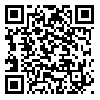BibTeX | RIS | EndNote | Medlars | ProCite | Reference Manager | RefWorks
Send citation to:
URL: http://journal.zums.ac.ir/article-1-2681-en.html

 , Farhad Taremian2
, Farhad Taremian2 
 , Mohammad Ali Nazari3
, Mohammad Ali Nazari3 
 , Maryam Bakhtiari4
, Maryam Bakhtiari4 
 , Saeed Momtazi5
, Saeed Momtazi5 
 , Mazaher Rezaei2
, Mazaher Rezaei2 

2- Dept. of Clinical Psychology, Zanjan University of Medical Sciences, Zanjan, Iran
3- Dept. Psychology, Faculty of Educational Sciences & Psychology, Tabriz University, Tabriz, Iran
4- Dept. of Clinical Psychology, Shahid Beheshti University of Medical Sciences,Tehran, Iran
5- Dept.of Psychiatry, Zanjan University of Medical Sciences, Zanjan, Iran
Background and Objective: The current study aimed to examine the effectiveness of the real neurofeedback treatment in comparison with mock neurofeedback in decreasing severity of major depression symptoms and changing α and β waves into a desirable pattern in major depression disorder. Materials and Methods: Using experimental single subject design, six individuals who were diagnosed as major depression sufferers were randomly selected and divided into two real neurofeedback and mock neurofeedback (placebo) groups. Both groups were treated for twenty sessions twice a week. Beck Depression Inventory II and Hamilton Depression Scale were used to assess both groups before, during and after the treatment. To analyze the collected data, effect size and improvement percentage were used. Results: The results of the effect size, the improvement percentage and the graphs suggested that the real neurofeedback was more effective in regulating brain waves and in decreasing major depression disorder symptoms in comparison with the mock neurofeedback. Effect size in Alpha wave in right hemisphere in the experimental and control groups was 2.21 and 0.48. Effect size in Beta wave of experimental and control groups was 2 and 0.51. Improvement quantity in the experimental group was 48% and in the control group was 23%. Conclusion: The effectiveness of real neurofeedback was not due to the changes in the placebo. It can be as a complementary treatment in treating major depression disorders. The findings of the current research were congruent with the previous research.
Received: 2014/06/22 | Accepted: 2014/06/22 | Published: 2014/06/22
| Rights and permissions | |
 |
This work is licensed under a Creative Commons Attribution-NonCommercial 4.0 International License. |


